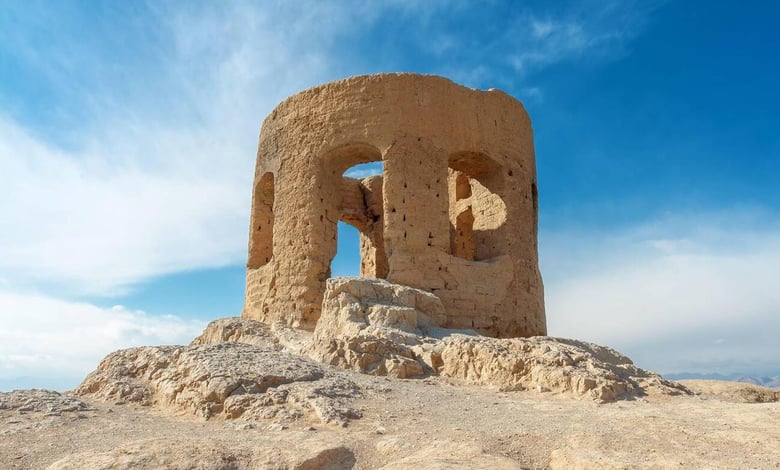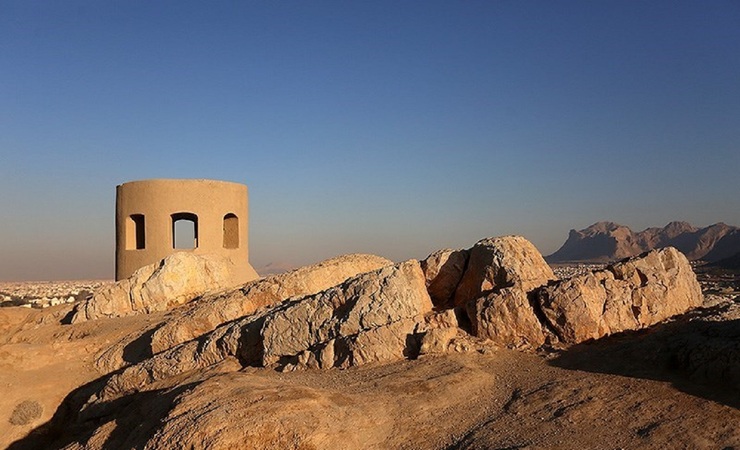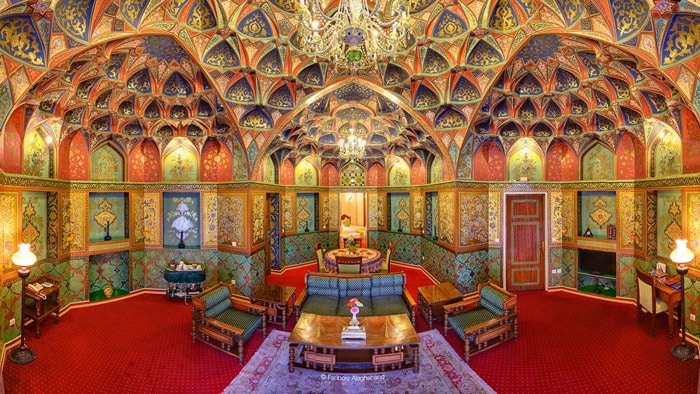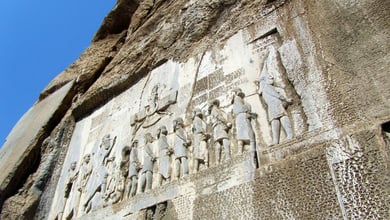Exploring Isfahan Atashgah: The Ancient Zoroastrian Fire Temple
Explore the Atashgah of Isfahan: Discover the Ancient Zoroastrian Fire Temple and Its Timeless Legacy

The Isfahan Atashgah, also known as the Fire Temple of Isfahan, is a historical site dating back to the Sassanian era.
Perched on a hill overlooking the Zayandeh River, this ancient structure was once a sacred Zoroastrian temple, where fire was continuously kept alight as a symbol of divine presence.
As a significant landmark, the Isfahan Atashgah has drawn visitors interested in its rich religious and cultural history.
Though time has eroded much of its original form, the site remains a fascinating destination for those eager to explore Iran’s pre-Islamic heritage. In this article, we examine its history, architectural significance, and what visitors can expect, offering essential insights for foreign travelers.
Contents
Fire Temple of Isfahan
Isfahan has always been hailed as the jewel in the crown of Persia. With history and culture standing dotingly on every street of this city, there comes another lesser-known yet very significant site with the name Atashgah-a place of ancient beginning of the very renowned faith under the name Zoroastrianism and usage of fire in applied worship within Iran.
It finds its place in history as the active fire temple of worship emanating from the very core of the roots of civilization. His legacy stands tall even today to bear testimony to the spiritual journey of this great civilization.
Historical Background: Zoroastrianism

Zoroastrianism is one of the world’s oldest monotheistic religions, which was founded by the great prophet Zarathustra sometime in the 6th century BCE. It speaks about coexistence-good and evil-and spreads adoration for Ahura Mazda as the only supreme god
The fire to the Zoroastrians is a sign of purulence and speaks to the existence of a god. The attached importance is reflected in how the faithful built temples of fire to hold flames continuously as an act of adoration.
In this case, Zoroastrianism was one of the accepted religions during the rise of the Persian Empire. Under such a religious congregation en-mass among the public, the Fire temples had been built in almost every regional area.
Having been ruled over by several empires, Isfahan was, in effect, turned into one of the greatest hotbeds of such ceremonies. Thus, the Atashgah brings out an intrinsic entity within the general weave that defines the city of Isfahan.

Atashgah: Wonder of Architecture
Isfahan Atashgah was on the fringe of Isfahan, a striking building primarily regarding its essential characteristic architectural element. The Temple of 17th century Safavid Dynasty itself was an absolute amalgamation of Persian architectural character with the classic Islamic design motives along with their traditional Zoroastrian designs.
The architectural structure speaks volumes of majesty with a grandiose entrance rich in tile inlays and vaults, reflecting excellence that the Persian skill could attain during this period. The moment you come inside to the interior, the atmosphere becomes quite airy-characterized by serenity. The main hall where the Zoroastrians kept their fire is quite high to allow daylight to pour inside into its confines.
Of course, the most obvious attraction before the visitors coming to see the Atashgah is the fire altar kept within its premise. Though the original Holy Fire itself had long been extinguished, it survives as an altar, carrying a strong metaphor for the faith of Zoroastrian. Avestan inscriptions, in the holy language of Zoroastrian scriptures at places around the altar, further establish the historic importance of this temple.
Cultural Significance
This atashgah is not only an architectural building but also cultural, carrying on its shoulders a lot of rich history related to Isfahan Zoroastrianism. Even if for no other reason, since it is one of the few such fire temples of Iran, perhaps tourists, scholars, and people in spiritual searches might be able to be appealed by it and would like to know the beginning of this age-old faith.
It reminded him of days when the fortunes of Zoroastrianism were at an enviable high in Persia to which it had brought inspiration in art, philosophy, and statecraft. In these temples lies pretty good insight into daily living, most ritualistic work, and their definite resolution to keep fire as holy.

Nowadays, Atashgah is a kind of cultural exchange: guests get acquainted with the traditions, philosophy, and historical causes that gave birth to such great belief as Zoroastrianism. A few events and lectures are held there to let one get a better view of the community of Zoroastrians and their input about Persian culture.
The visit to the Atashgah will be very rewarding in this respect. Equally by car and with public transport, it can easily be reached 30 kilometers away from the very center of town. Beautifully surrounded by gardens and picturesque landscapes, it stands in tranquil surroundings that would ensure, in natural conditions, the quietness of the atmosphere proper for reflection and investigation.
These temples have guides that, upon arrival, implore knowledge on visitors about the history and importance of the places. It offers guided tours meant to tell everything about either the architectural feature of the place, symbolism of fire in Zoroastrianism, or all those rituals performed within these halls.
It allows photography, and it’s just a great opportunity to shoot something really nice from the temple and its surroundings. The interior of the temple is mystical because the game of light with shadow makes a person think deeper about spiritual sides of the place.
Useful Visitors’ Information
Location:
Atashgah is in mountainous areas of Isfahan and creates an excellent showcase of landscape beauty.
Fire Temple of Isfahan Location
Operating Hours:
Open throughout the year, but to avoid disappointment, it is wiser to make prior notice without coinciding holy holidays or festivals.
Entry Fee:
Very cheap entry fees cater for entrance, just a little contribution required in maintaining this place and partly assists in funding some of the cultural events held here.
Dress Code:
One is expected to put on proper clothes, largely because it is a very sacred place. He respects in consonance with tradition and belief heaped upon him concerning a temple of that stature.

Legacy Of Atashgah
As this world moves with its day-to-day modernization process, so the poise of Atashgah rises high to bring into the limelight roots that reach further down to Zoroastrianism, and therefore, turn Iranian history richly variegated. And a beacon into which future generations can look the more they get inspired in appreciation and care in respect of preserving the heritage related to Zoroastrianism.
Aspects of the recent revival of Zoroastrian culture and philosophies of themselves in most recent times have thus begun to include an Iran with whom the worldwide diaspora might attempt to link-such as for a place for dialogue, for a place of learning, and spiritual connective point, there comes the playing role of an Atashgah.
Indeed, this is the stuff of which dreams are made: distillation of Zoroastrianism with clinging onto Persian culture. From historians to spiritual and lovers of architectural beauty-all get beckoned to the call of Atashgah for an afternoon of discovery and contemplation. From the pull of history to spirituality, or whatever trifling curiosity about life, it is the attractions that draw sojourns to promises of unforgettable heart stays in ancient Persia.
1. What kind of place is the Isfahan Atashgah?
Atashgah was the ancient Zoroastrian fire temple of Isfahan, which had historical and cultural relations to Zoroastrianism and spiritual development of the Persian civilization.
2. Who is the founder of Zoroastrianism and when was it founded?
The Zoroastrian religion was one of the oldest monotheistic on Earth and was founded by a great prophet in the 6th century BCE who went by the name Zarathustra.
3. What do the visitors see when they come to Atashgah?
These guided tours, which take place in very peaceful and attractive surroundings, explain the architectural features of the temple, what fire means to Zoroastrians, and the rituals performed at the Atashgah.







